Rigid Taping techniques
Table of Contents
What is a Rigid Taping?
Rigid tapping is also known as athletic taping. Rigid tapping or Athletic taping is a temporary technique or an adjunct mechanism adopted as a measure of post-injury rehabilitation.
Athletes mainly use it as a preventive measure to protect an existing injury. The goals of the taping in sports are to restrict the motion of an injured joint, compress soft tissues to prevent swelling, support the anatomical structure involved in the injury, serve as a splint or to secure a splint, and secure the dressing and/or bandages, protect the injured part from re-injury and to protect the injured part while the healing process is under progress.
Rigid tapping or Athletic Taping has been at the forefront for a long time. It plays an essential role in coping with an athlete’s post-injury conditions and performing in the field even before completing the rehabilitative recovery from injury.
Aim of rigid taping :
Stabilize or support associate injury Relieve pain by de-loading vulnerable or painful structures Facilitate traditional movement, muscle action, or bodily property patterns.
Functions of rigid tape :
- The main performance of standard sports tape is to supply support associate degreed stability to an injured joint or muscle cluster by immobilizing it.
- This could be the recording technique of alternative in cases of severe injury, wherever any movement of the injured area could result in additional injury.
- The elastic properties of rigid tape create it unsuitable in things wherever extreme support and stabilization are needed.
Principles of rigid taping :
- Athletic taping is based on certain criteria or set rules, rules, and pointers which that the main
- “principles” square measure supported that the consultants perform the method of tape on the hurt a part of the sports person.
- the overall principle additionally includes a couple of criteria that practitioners ought to think about – skin preparation,
- the functional position of the body part to be taped, body mechanics of the practician, tape application, and
- removal of the tape post activity. Skin preparations that ought to be carried out before taping include
- removal of hair, cleansing of the skin, addressing any lesions with necessary consultation, mistreatment of adherents, and lubricants, covert, underpads, etc.
- Placing the jock in an associate applicable position.
- a comfortable table height and position appropriate for the health care supplier to
- minimize strain and fatigue.
- sort and breadth of the tape.
- To a dry and clean space and at body temperature.
- immediately once cryotherapy or hydrotherapy is to be prevented.
- Areas subjected to friction blisters should be lined with protective pads or under-wraps.
- Removal of tape should be done following the proper strategies by using tape cutters and specially designed scissors.
- The skin must be clean adequately of the tape residue.
- If noted, any blisters or skin abrasions should be taken care of in real-time.
Indications of rigid taping :
Rigid tape can be best used by Physiotherapist for:

- Relieve your pain
- Improve joint stability
- Enhance athlete confidence
- Reduce injury recurrence
- Prevent injury
- Reduce strain on injured or vulnerable tissues
- Correct faulty biomechanics
- Inhibit muscle action
- Facilitate muscle action
- Compress in the presence of edema or lymphatic drainage
Contraindications of rigid taping :
Absolute contraindications are when something should ne’er be done during physical therapy (or any other medical treatment or procedure). performing a treatment or procedure on somebody when it is absolutely contraindicated might put the patient in danger of injury. remember the expression initial, do no harm.
- Severe allergic reactions to the tape: Rigid tape adheres to your skin. If you have a history of severe hypersensitivity to adhesives, you should avoid victimization the tape.
- Typically, the rigid tape is worn throughout the athletic activity, but it can also be worn for many days, and placing your skin in contact with adhesives for an extended period of time can lead to serious allergic reactions.
- Open wounds: If you have an open wound or incision that’s not absolutely for many, don’t use rigid tape. The tape may manufacture a state of affairs wherever microorganism is introduced into the wound.
- Presence of deep vein occlusion (DVT): A DVT could be blood in one of the deep veins of the arm or leg. victimization rigid tape close to the DVT will increase quality and blood flow.
- this might cause the clot to become dislodged and will place you in danger of an embolism, which can be fatal.
- Infection: If you are showing signs of infection, the rigid tape should not be used, as it might worsen your condition.
- Altered sensation: If you’ve got the uncontrolled polygenic disease, you’ll suffer from peripheral pathology, a condition wherever you’ll have altered sensation in your legs or arms.
- rigid tape should not be used if you have polygenic disease, since you may not know if the tape is inflicting a reaction or a problem with your skin.
- other conditions that cause sensation loss, like strokes, may also be contraindicated for an equivalent reason.
- Active cancer: If you are currently undergoing treatment for cancer, you should avoid using rigid tape, since it’s thought that the tape increase circulation, and increasing blood flow and nutrition to a cancerous lesion may be dangerous.
Benefits of rigid taping :
- Injury prevention: tape recording is principally wont to help the jock for the come to activity when a minor injury occurs.
- correct application of the tape is primarily able to offer stability and support to the hrs de combat structure, therefore serving to the jock to come to the game before the world has come back to pre-injury standing.
- tape recording has been oriented collectively of the major procedure of hindrance ways to cut back injury in collision sports by reduction within the chance of accidental factors like contact with the instrumentality of another participant Overuse injury of the wrists and ankles, particularly in gymnastics exercise may be prevented.
- The severity of the many injuries will be reduced by tape recording. tape recording could convince be superior to rigid and semi-rigid bracing in injury hindrance.
- Community amateur and most skilled athletic events most often use prophylactic tape recording. it’s additionally been projected that tape recording reduces the incidence of injury and its intensity in most sporting.
- Conservative management: acceptable application of tape has been found to cut back the symptoms of medial leg bone stress syndrome or shin splint.
- In most patients, non-operative treatments, as well as patella-femoral tape recording and bracing, have been thought effective. tape recording has been found to be effective in combating turf-toe injuries.
- tape recording has been referred for a condition “sand toe”, a condition like turf-toe alongside bound alternative precautions. Non-operative management of inbound radio-carpal joint injuries in cases of alpine athletics includes tape recording.
- Biomechanical effects of taping: tape recording has vital blessings in aiding the patient in maintaining traditional biomechanics throughout participation.
- articular plane tape recording has been found to decelerate the inversion rate considerably and facilitate a protecting fasciculus response.
- tape recording improves force attenuation in lower extremity throughout running by shifting peak force to animal foot and thence acting synergistically in weight bearing.
- Role in Pain Management: tape recording plays a big role in the reduction of pain kind to physical activity.
- Irritated inflamed neural tissue will be automatically uploaded by tape recording on the pathway, therefore shortening the inflamed region and reducing the pain.
- tape recording has been found to enhance resting scapular position. typically before considering surgical alternatives just in case of patella-femoral pain syndrome, tape recording is taken into account to be a much better technique.
- Taping has been found to reinforce into caption and position sense at the articular plane.
- tape recording could be a preventive strategy throughout lower extremity rehabilitation by minimizing foot and articular plane injuries, particularly throughout practical come activities.
The disadvantage of rigid tapping :
- Incorrect athletic taping may lead to blistering or future injuries.
- After activity and motion begin, the stiffness of the tape reduces.
- Physiological dependency on using tape.
- Expensive, especially when it is needed frequently.
How to remove tape?
- When removing the tape, it’s essential to ensure you don’t just tear it off as you could damage your skin and cause irritation.
- To begin, ensure you are removing the product in the direction of your hair growth, to lessen any discomfort experienced. Ease it off carefully, folding the edge of the tape back slowly.
- Make sure to check that you’re peeling the removed tape back against the still applied tape at an angle, as opposed to just ripping it off.
- With your other hand, pull your skin taut and tug gently but firmly in the opposite direction of the applied tape, to assist in the separation of skin and tape and to ensure minimal discomfort.
- If you have not shaved before applying the tape and the area of the body you have treated has a lot of hair growth, it’s a good idea to press down firmly on the tape as you are peeling it back, in order to reduce pain.
- Alternatively, you can apply an adhesive dissolving agent like baby oil, rubbing it in and leaving for approximately 5 minutes, before attempting to remove the tape slowly.
- This will lessen the stickiness and ensure a smooth removal, with no pain.
- Always use a product like baby or olive oil to remove Kinesio or rigid tape if you have sensitive skin or are prone to irritation.
- When you need to remove Kinesio or rigid tape, take care to pull it gently and at a slight angle, in the direction of any hair growth, pulling your skin taut with your other hand.
- Doing it this way will minimize any discomfort or pain and will ensure your skin is not lined as the tape is removed. You can encourage easier removal by stretching the skin behind the tape with a fingertip.
- When you need to remove Kinesio or rigid tape, take care to pull it gently and at a slight angle, in the direction of any hair growth, pulling your skin taut with your other hand.
- Doing it this way will minimize any discomfort or pain and will ensure your skin is not lined as the tape is removed. You can encourage easier removal by stretching the skin behind the tape with a fingertip.
- If you have sensitive skin or want an even gentler removal, cover the tape with a dissolving agent like olive oil or baby oil, leave for a few minutes, then ease the product off carefully.

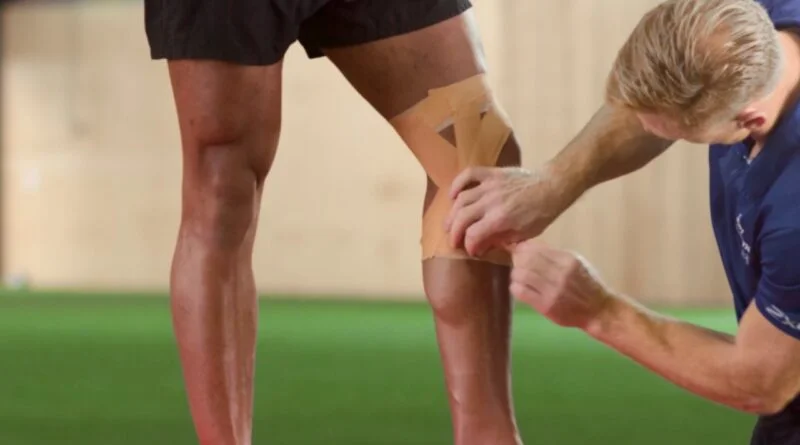
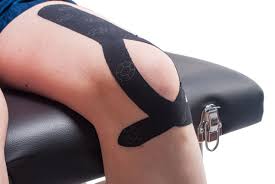
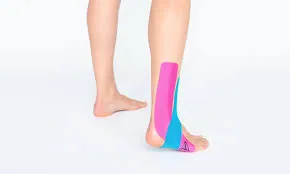
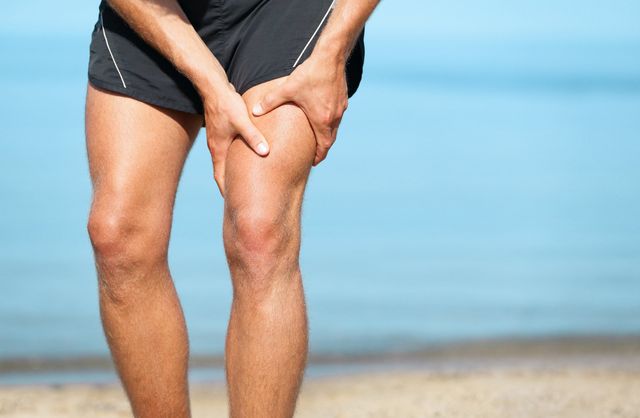
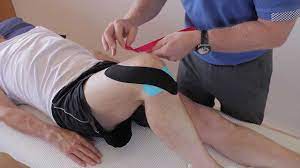
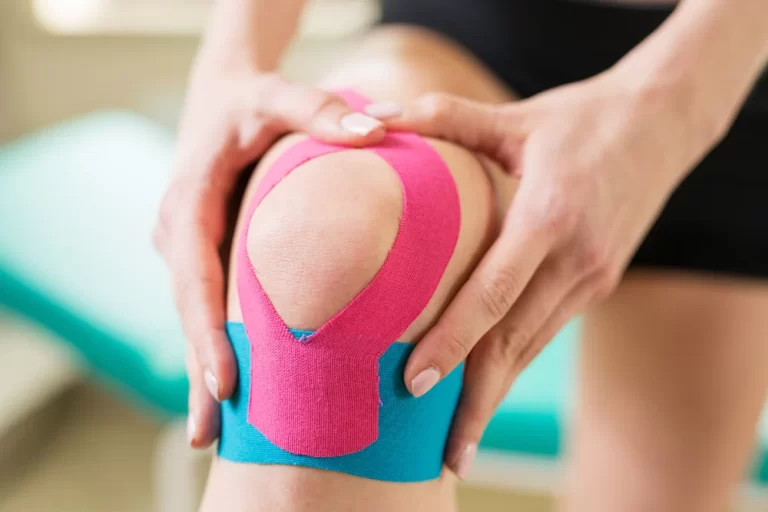
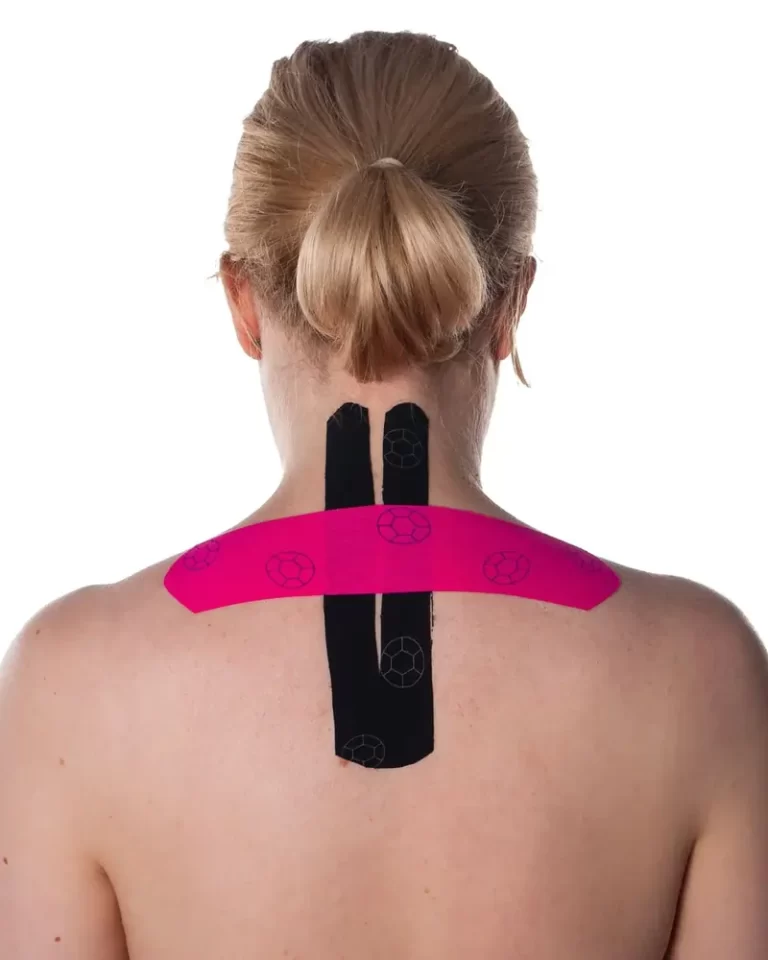
One Comment